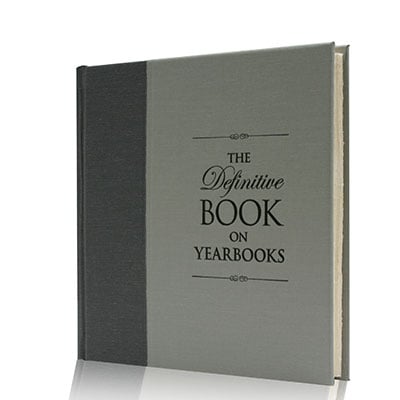
by Bruce Watterson, Public Relations and Communications Consultant (formerly Chair of the CSPA Judging Standards & Practices)
The life cycle of a yearbook inspires. It is both frantic and fun. In the beginning, creating a new volume each year means discovering new things about your school, your staff, and your locale. Done well, a creative book inspires each reader to think about the year in highly personal ways.
A 60-Minutes producer demanded that his staff “Tell me a story!” each week on their broadcast. Great yearbooks simply tell great stories.
Editors, particularly, believe it takes the most concentrated work — coupled with creative inspiration — to come up with just the right theme. In fact, of all the critical periods of production, the moment the staff hits on the right theme, it is organic. Instinctively, editors and staffs seem to know where to go next.
Steve Jobs, former CEO of Apple Computer, believed that creativity is “just connecting things.” At intervals in life, even yearbooks must change to keep pace with the times. For example, staffs today aren’t locked into traditional approaches to structure or content flow. Senior portraits may no longer appear in a people section. Instead, editors may rename and refashion a special section called “The Senior Experience” and fill it with unique anecdotes about the class. Calendars and maps and charts are embedded in sections to add depth to the activities, sports, academics, extra-curricular topics of the year. Staffers look around, and every tool or resource they can think of in their life that “works” for them can be adapted to the yearbook.
Instead of a traditional section-on-section approach to structure, one staff recently chose to use a simple list as a blueprint for their table of contents: Ten steps to graduation. The entire yearbook became a metaphor for a creative approach to structure and design. Sports offerings were covered in each of the ten steps. Similarly, the approach allowed for even greater visual-verbal academic story telling, for insightful references to club successes and for egalitarian features on a variety of students. Ten steps turned out to be a ten-fold winner, showcasing hundreds of students who might not have been included otherwise.
Thinking differently is a critical part of playful creative expression. Years ago, staffs included a mini-magazine inside the covers of a yearbook to highlight content that didn’t seem to fit anywhere else. In an effort to curb expense, yearbook staffs have absorbed literary magazine content and used a different paper stock to differentiate the material.
Creative staffs look at things differently. In today’s yearbook culture, staffs tweak format to express more than their sense of style. For them, size and shape matter. Content continues to drive their designs. They believe in illustrating, not decorating. Square books or landscape designs allow these staffs to push forward traditional yearbook design.
How do these staffs rise to the level of creative geniuses? They work at it. I suggest that staffs take time each month to talk to one another, to look and really (Really? Really!) see what the teams of designers and writers have created, to offer feedback on the spot. Don’t wait until deadline to make wholesale changes or suggestions for improvement.
Go public. Paint a very public wall in your school with the thematic statement for your current yearbook. Don’t keep theme a secret. Ultimately, if a staff does keep it a secret, the old maxim “who cares?” holds true. Showcase the best pictures of the week online on your yearbook website. Ask your student body to submit great images. Staffers can’t be at all events. Give photo credits to those images worth including. This transparency may be the greatest recruiting tool ever.
As a team, take a little time off-campus to go on a graphics safari to the local bookstore. Bring along your sketchpads, iPads, computers, iPhones. You aren’t allowed to snap pictures of copyrighted materials, but you can record spin-off ideas. It all becomes fuel for your creativity, poking around for better ways of designing, writing, photographing. After all, creative individuals are keen observers.
Excerpt from The Definitive Book on Yearbooks:

The Definitive Book on Yearbooks captures the hundreds of years of experience of well-known personalities in yearbook journalism. This highly respected group brings to a discussion the creative process and the nuts-and-bolts production of yearbooks in a beautifully bound collection. The essays tell stores, capturing the story-telling appeal of yearbooks.
Read the book everyone’s talking about! To find out more about The Definitive Book on Yearbooks, contact your Balfour representative.

